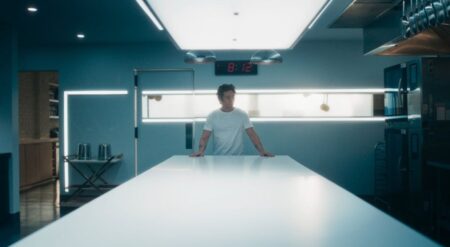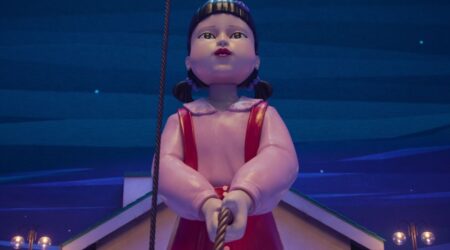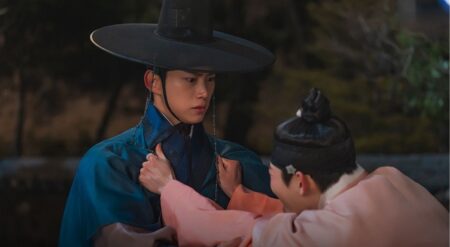
When it was announced that She-Hulk would be making her entrance into the MCU with a courtroom-inspired comedy show, I think it’s safe to say everyone was taken aback but willing to see the fully fleshed-out premise. However, after reaching the finale of She-Hulk Season 1, I’m even more confused than I was going in.
When Jennifer Walters (Tatiana Maslany), the cousin of Bruce Banner/Hulk (Mark Ruffalo), becomes contaminated with the blood of her jolly green giant of a cousin, her body undergoes a radical transformation that turns her into She-Hulk. However, unlike Bruce, Jen has absolute mastery of her ability to change forms and exists as one self-identified being. Wanting to lead an everyday life, Jen heads back to her job in LA to continue to practice law until forces beyond her control lead to her revealing her new form. Overnight she becomes a celebrity superhero, but Jen just wants to live her life, do her job, and find happiness which is far easier said than done.
I need to clarify something before diving in on this series because I love Hulk stories. In fact, Planet Hulk by Greg Pak was one of the first comics I read that got me obsessed with the medium. I grew up in the 80s with Lou Ferrigno’s The Incredible Hulk on my family’s TV. So the Hulk and the many variances that have spawned from him hold a very special place in my heart. With all that being said, I feel like what we got from She-Hulk Season 1 lacked quality and depth in all major facets of what the show could be. From the visuals to the plot itself, much of what we saw was unfocused and messy.
In a week where we had some astounding visuals situated on Disney+ via Andor and Werewolf by Night, She-Hulk is such a sharp contrast. The series starts out somewhat decently as Jen stands next to Bruce. There’s a texture to their skin, and a level of detail you can appreciate. But once Bruce exits the show, the caliber of the VFX takes a steep decline. This is most notable when Jen takes her new position in the superhuman law division. Not only is the texture on her skin lost, but her tone is a completely different shade of green.
It’s not only the look of She-Hulk but the movement of her character through physical spaces. Jen’s Hulk form should portray a weight to it; after all, she is 6 foot 7 inches of pure muscle, but instead, she seems to float, failing to make contact with the space around her.
I love when a story can allow you that time to escape, to pull you into the world of the characters and feel like you’re a part of the journey. However, the visuals deployed in She-Hulk downgrade that experience. The series clearly invested money in the digital design of Hulk, and even the Abomination (Tim Roth), but made a choice to cut back on Jen’s appearance. There’s even a fourth wall joke about this during the finale, which doesn’t land as a comedically clever meta-reference but rather a cheap funny to justify the visuals.
Sadly, though, it’s not just my gripe about what is on screen, but the content of the story itself. The show is inspired by the likes of comedy courtroom series such as Ally McBeal from the 90s, while shoe horning in cameos and MCU references. While I’m happy to get more Wong (Benedict Wong), Abomination, Hulk, and finally getting to see the return of Matt Murdoch’s Daredevil (Charlie Cox), it’s clear that She-Hulk leans on these connective points to remain relative.
I accept the criticism that not all stories are curated for every viewer, and additionally, not every Marvel product needs to be a galactic-level threat with a budget to match. The MCU has expanded, and it needs to tackle more genres beyond the “generic superhero origin” we’ve seen a hundred times before. However, if a show is marked as a comedy, it needs to be funny, and more often than not, the jokes were very surface-level.
The plot makes a bold move in trying to be more than a simple comedy, including social commentary on the experience and existence of the modern woman. But this is never explored past one very brief speech and some off-handed comments. At one point, Jen even uses it to explain to Bruce how she so quickly masters her transformation, stating she’s had to manage her rage her whole life. Again, this is a strange path to take as it undermines Bruce’s entire arc and grief, and pain he’s endured as an Avenger.
Even the action is used sparingly, and it ranges from enjoyable to downright shoddy, with the high points being Jen’s fights with Hulk and Daredevil to the low point of her fight with Titania (Jameela Jamil). In the latter, I swear you could see the wires in the shot.
As for the finale, I’ve got so many thoughts, but to sum it up, it felt like a very cheap cop-out to subvert the main narrative with a meta-joke that was more confusing and odd than funny.
Overall, She-Hulk Season 1 had a few bright spots here and there but ultimately was just very average and failed to scratch the surface of anything. The show never really picked a firm narrative as it pivoted from comedy to action to social commentary to rom-com. Less She-Hulk smash, more She-Hulk crash.
She-Hulk Season 1 is available now exclusively on Disney+.
She-Hulk
-
Rating - 4/104/10
TL;DR
She-Hulk Season 1 had a few bright spots here and there but ultimately was just very average and failed to scratch the surface of anything. The show never really picked a firm narrative as it pivoted from comedy to action to social commentary to rom-com.






